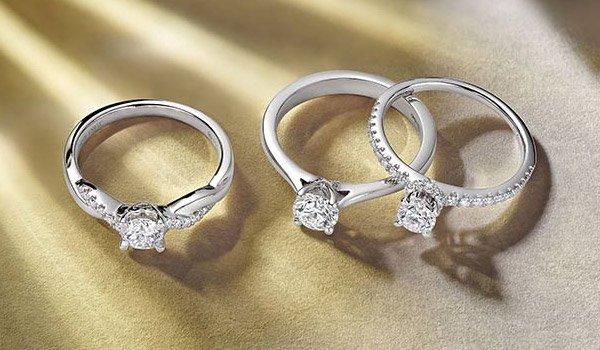Diamonds have always been a symbol of luxury, elegance, and eternal love. Traditionally, diamonds were mined from the earth, but with advancements in technology, lab-created diamonds have emerged as a viable alternative. In this article, we’ll delve into the intricacies of lab diamonds versus real diamonds, examining their characteristics, pricing, ethical considerations, durability, popularity, investment value, myths, and how to choose the right option for you.
Table of Contents
1. Introduction
Diamonds, whether natural or lab diamonds vs real diamonds, hold a timeless allure. However, the processes involved in their creation and the impact on the environment and society differ significantly. Let’s explore the key differences between lab diamonds and real diamonds to help you make an informed decision.
2. What are Lab Diamonds?
Definition
Lab diamonds, also known as synthetic or cultured diamonds, are created in controlled environments that mimic the natural conditions under which diamonds form in the earth’s mantle. These diamonds have the same chemical composition, crystal structure, and optical properties as natural diamonds.
How They’re Made
Lab diamonds are produced through two primary methods: High Pressure High Temperature (HPHT) and Chemical Vapor Deposition (CVD). HPHT replicates the natural diamond formation process by subjecting carbon to high pressure and temperature, while CVD involves growing diamonds from a carbon-rich gas.
3. Characteristics
Quality
Lab diamonds are virtually indistinguishable from natural diamonds to the naked eye. They exhibit the same brilliance, sparkle, and clarity grades. With advancements in technology, lab diamonds can now rival the finest natural diamonds in quality.
Environmental Impact
Unlike traditional diamond mining, which involves extensive land excavation and has significant environmental consequences, lab diamond production is more sustainable and eco-friendly. It requires less energy and water, produces minimal waste, and avoids the environmental degradation associated with mining.
4. Pricing
Cost Comparison
One of the most significant advantages of lab diamonds is their affordability compared to natural diamonds. On average, lab diamonds are 20-40% cheaper than their mined counterparts, making them an attractive option for budget-conscious consumers.
Factors Affecting Price
The price of both lab diamonds and natural diamonds can vary based on factors such as carat weight, cut, color, and clarity. However, lab diamonds generally cost less because they skip the mining process, which accounts for a significant portion of the price of natural diamonds.
5. Ethical Considerations
Conflict-Free
Lab diamonds are inherently conflict-free, as they are produced in controlled laboratory environments and do not contribute to the exploitation of workers or funding of conflicts in diamond-producing regions.
Sustainability
By opting for lab diamonds, consumers can support more sustainable practices in the jewelry industry and reduce their carbon footprint. Lab made diamonds have a lower environmental impact and help conserve natural resources.
6. Durability
Hardness
Both lab diamonds and natural diamonds are incredibly durable, ranking as the hardest known natural material on the Mohs scale. They are resistant to scratching and chipping, making them ideal for everyday wear.
Wear and Tear
Despite their durability, diamonds can still suffer wear and tear over time, especially if not properly cared for. Regular maintenance, such as cleaning and inspection by a jeweler, can help preserve their brilliance and longevity.
7. Popularity
Market Trends
In recent years, lab diamonds have gained popularity among consumers seeking affordable luxury and sustainable alternatives to natural diamonds. The market for lab-grown diamonds is projected to continue growing as awareness of their benefits increases.
Consumer Perception
While some consumers still prefer natural diamonds for their perceived rarity and prestige, the stigma surrounding lab diamonds is gradually diminishing as more people recognize their quality and value.
8. Investment Value
Resale Value
Historically, natural diamonds have retained their value over time and can serve as a store of wealth. However, lab diamonds may not hold the same resale value due to their lower perceived rarity and market demand.
Future Outlook
As lab diamond technology advances and consumer preferences shift towards sustainability, the investment potential of lab diamonds may increase. Their affordability and ethical appeal could make them a compelling choice for future generations.
9. Myths and Misconceptions
Quality
One common misconception about lab diamonds is that they are inferior in quality to natural diamonds. In reality, lab diamonds undergo rigorous testing and certification to ensure they meet the same standards of quality and beauty as natural diamonds.
Affordability
Another myth is that lab diamonds are cheap or fake. While lab diamonds may be more affordable than natural diamonds, they are genuine gemstones with the same chemical and physical properties.
10. Choosing the Right Option
Personal Preferences
Ultimately, the choice between lab diamonds and natural diamonds depends on your personal values, budget, and preferences. Some may prefer the allure of a natural diamond, while others prioritize affordability and sustainability.
Budget Considerations
If budget is a primary concern, lab diamonds offer excellent value for money without compromising on quality. Consider factors such as carat weight, cut, and clarity to find a lab diamond that suits your style and budget.
11. Conclusion
In conclusion, the debate between lab diamonds and real diamonds boils down to personal choice and priorities. While natural diamonds hold a timeless appeal, lab diamonds offer affordability, sustainability, and ethical peace of mind. Whether you choose a lab diamond or a natural diamond, both are exquisite symbols of love and beauty.




